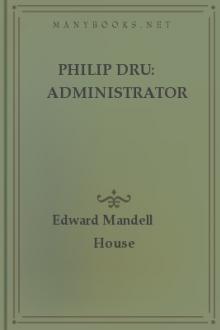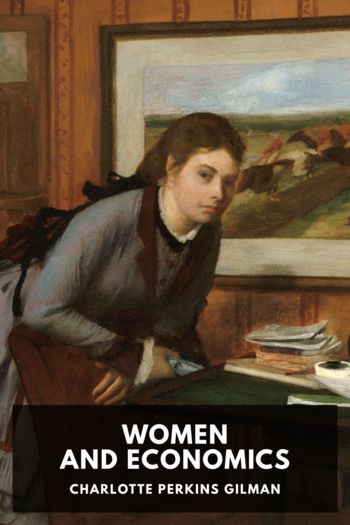My Spiritual Journey, Dalai Lama [best short books to read .TXT] 📗

- Author: Dalai Lama
Book online «My Spiritual Journey, Dalai Lama [best short books to read .TXT] 📗». Author Dalai Lama
In this combat, the enemy is not who one might think it is. The Dalai Lama is not fighting against the Chinese. How could he call the Chinese his enemies? When he speaks of them, he has for many years called them his “brothers and sisters.” An advocate of both inner and outer disarmament, he advances onto the international scene with bare hands. No terrorist, no planter of bombs, no kamikaze cites the Dalai Lama as his inspiration. To the younger generation of Tibetans who want to fight with the Chinese occupier, he insists on the path of nonviolence, from which he has never strayed.
When he left Tibet in 1959, the Dalai Lama could not carry any wealth with him; that was the price of his successful flight beyond the Himalayan barrier. But this does not mean that he was destitute. Stripped of material goods, he carried within himself the treasures of wisdom, love, and compassion he had cultivated since childhood. In the Potala monastery, in the secrecy of its age-old walls, he had practiced handling the weapons that defeat all weapons, weapons that prepare for the victory of peace.
The military occupation of Tibet by the Chinese nation, the violation of human rights, the forced sinicization of the inhabitants, and the demographic aggression are flagrant, painful, and unbearable. The Dalai Lama has ceaselessly denounced them for over fifty years to the community of nations, whose response has not matched the gravity of events on the Roof of the World. The recognition of the Tibetan genocide by the International Commission of Jurists in 1950 led to no measures against China. And although the Dalai Lama has managed to mobilize public opinion throughout the world, he has not obtained a commitment from the community of nations capable of stopping the violation of human rights in Tibet. Does this mean that love and compassion are powerless against China’s economic interests and the force of massive blows by the Chinese government? One might think so at first, and one might wax ironic about the idealism of the leader of the Tibetans, a monk who represents the last theocracy of another age, which he transformed into a democracy in the first years of his exile. But another interpretation soon emerges.
For half a century, the Dalai Lama has appealed to the world’s conscience. At a time of global society and history, when human rights are flouted in Tibet, isn’t it the humanity of all of us that is violated? The victory of peace over a dictatorship that does not respect the Universal Declaration of Human Rights can only be a victory for everyone.
What if, in order to transform the world, we have to begin by transforming ourselves? By assuming our universal responsibility? What if, following the Dalai Lama’s example, we were all called on to become “peacemakers” in order to liberate ourselves by liberating six million Tibetans, thus leaving future generations with a more human, more fraternal world?
We must come to some sort of realization now, so that we are not destroyed by remorse for having been passive witnesses of a tragedy and so that, with the Dalai Lama, we can win peace.
—Sofia Stril-Rever
Kirti Monastery
Dharamsala, December 2008
NOTES
Foreword
1. The first Dalai Lama, venerated as an emanation of Avalokiteshvara, the Buddha of Compassion, lived from 1391 to 1474.
2.Dalaï-lama, une vie après l’autre: a documentary directed by Franck Sanson, based on an idea by Mehramouz Mahvash, and written by Sofia Stril-Rever.
My Three Commitments in Life
1. Speech delivered to the European Parliament, Brussels, December 4, 2008.
Part One: As a Human Being
1. Acceptance speech for the Congressional Gold Medal, Washington, D.C., October 17, 2007.
2. "Human Rights, Democracy, and Freedom,” statement for the sixtieth anniversary of the Universal Declaration of Human Rights, December 10, 2008.
3. Nobel Peace Prize acceptance speech, Oslo, December 10, 1989.
4. Statement made in Taiwan, June 2008.
5. See Paul Ekman, ed., Emotional Awareness: Overcoming the Obstacles to Psychological Balance and Compassion (New York: Times Books, 2008).
6. A dzomo is a cross between a yak and a cow.
7. Heinrich Harrer, Seven Years in Tibet, trans. Richard Graves (London: R. Hart-Davis, 1953), p. 225.
8. Statement by the Dalai Lama in Amaravati, January 10, 2006.
9.Dharma is a polysemous Sanskrit word meaning, here, “the teaching of the Buddha.”
10. Gendun Drubpa, the first Dalai Lama, lived for eighty-three years.
11. Samdhong Rinpoche is Kalon Tripa, or prime minister, of the Tibetan government in exile. Born in Kham in 1939, he was recognized as a reincarnate lama at the age of five, and he went into exile in India, following the Dalai Lama, in 1959. In 2001 he was elected Kalon Tripa for the first time, with 84.5 percent of the vote.
12. Declaration made on December 2, 2007.
13. Shantarakshita, an eighth-century spiritual master and Indian philosopher, introduced Buddhism to Tibet at the invitation of King Trisongdetsen.
14. The Tibetan term tulku, which designates lamas who are leaders of their lineage, is the translation of the Sanskrit nirmanakaya, which means “transformation body.”
15. The Fourteenth Dalai Lama, interview with Martin Brauen, in The Dalai Lamas: A Visual History (Zurich: Serindia Publications, 2005), 9-10.
16. Quoted in Claude B. Levenson, “Tibet, le talon d’Achille de Pékin (Tibet, Beijing’s Achilles’ Heel),” Revue de politique internationale 117 (Fall 2007).
17. Egil Aarvik, speech presenting the Nobel Peace Prize, Oslo, December 10, 1989.
18. The Dalai Lama and Victor Chan, The Wisdom of Forgiveness: Intimate Conversationsand Journeys (New York: Penguin, 2004), 14.
Part Two:





Comments (0)